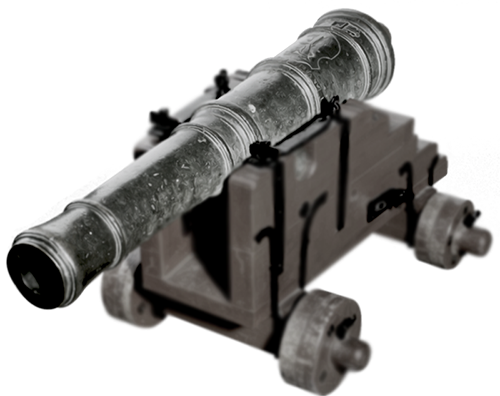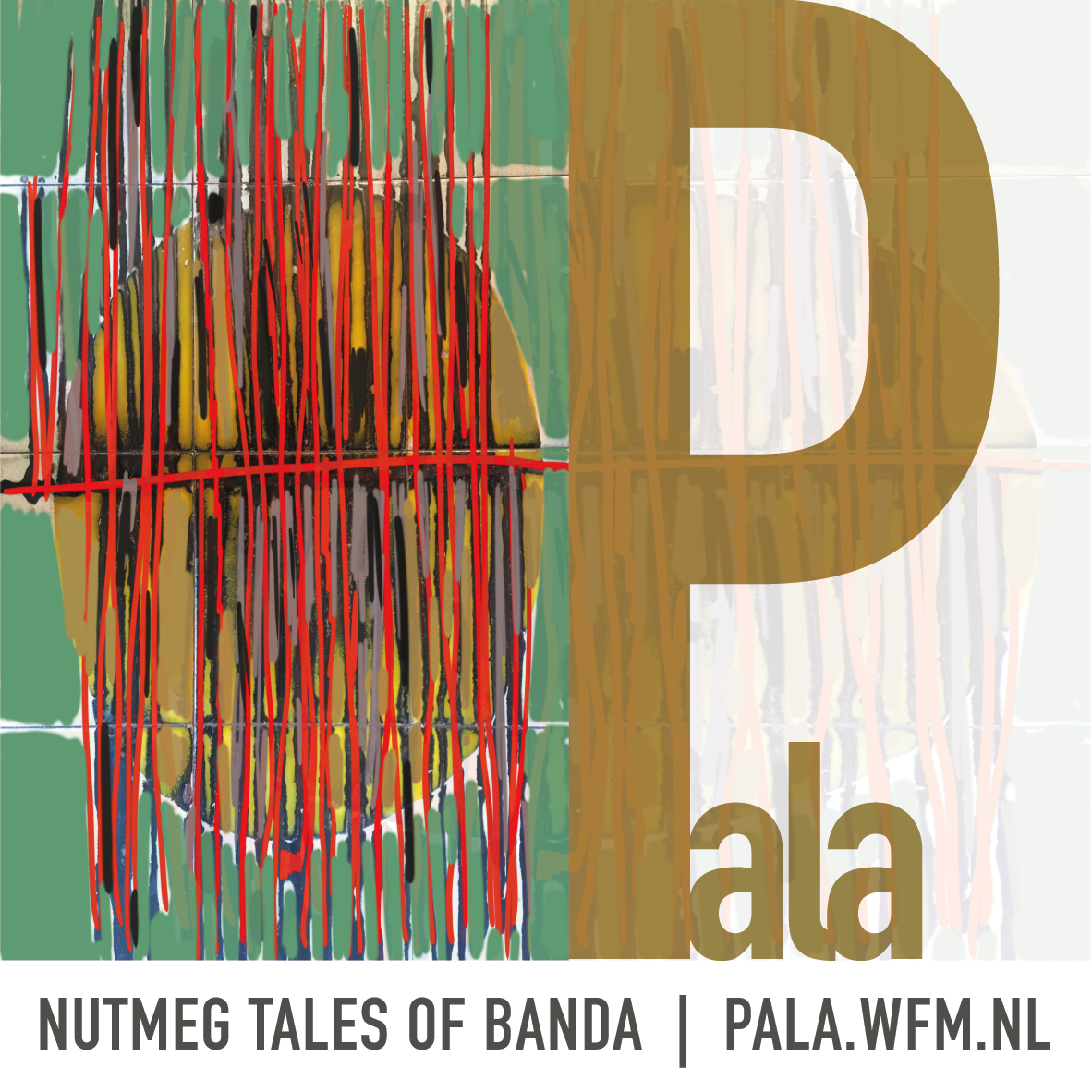Banda’s sorrow
was the sorrow of the commoners
it was the sorrow of earthenware bowls
how the blessings of spices became curses
the rich noblemen were impoverished
for the glory of Nassau and Belgica
the reef breaks the wave-wave-waves
Let us roam the world
wind is blowing in our people’s faces
that gust of wind, a block of driftwood on the water
that gust of wind, flotsam floating on the sea
further on the island Kur, where we go on shore
there, on the horizon, Kur Island

Exploitation
a new society
Parts of the Banda Islands had been rebuilt more than once after a seaquake or earthquake. However, the tsunami of violence in 1621 must have caused a far greater decimation. More of less the total population had gone: killed, deported or fled. Particularly on the island of Lontor most of the villages and buildings had been destroyed. The majority of the nutmeg trees, that had been the reason for the violence, were unscathed. Obviously, the trees and the soil in which they stood had to be prepared for new harvests, but the trees were still standing.
In order to no longer be dependent on ‘unreliable’ nutmeg tree growers, the VOC had devised a plan for organised repopulation and exploitation of the Banda Islands. The idea of ‘planting a new population’ to grow products wasn’t new. Jan Pieterszoon Coen had suggested this earlier and it had already been implemented on the island of Ay in 1616, after the island had been conquered. The available land was divided into plantations, also called gardens and with a nice word ‘perken’. On these perken managers, called perkeniers, were appointed who had been recruited from the European and Indo-European population of the archipelago; mainly former VOC employees. In total 68 perken of equal size were created. In addition to the 31 perken on Ay, 33 were created on Lontor and 3 on Banda Neira, where the VOC had its headquarters. In 1628 all the perken had been laid out. From that time some parts of perken were added to adjacent perken, or these were split up, for example when a perkenier died and the land was divided among his sons.

‘Disabled European soldiers and other adventurers from their own country in order to control the nutmeg cultivation, whose descendants are a lazy, ignorant, useless and lost class of people, the current owners, now’
Slavery in the East
Writer, journalist and researcher Reggie Baay talks about slavery in the East. He is a specialist regarding the colonial and post-colonial literature and history. In 2015 he published the book: ‘Daar werd wat gruwelijks verricht’ (‘Something horrific was done there’), about the unknown history of colonial slavery in the Dutch East Indies. In this contribution he talks about the displacement and traumas of the enslaved people in the Indonesian archipelago, in a compelling way.

‘They were called perk serfs and remained the ‘property’ of the VOC‘
Banda in watercolor
Pieter Jan Klapwijk of the Maritime Museum in Rotterdam talks about Maurits Ver Huell’s voyage to Banda and the watercolours he painted during and after his trip. Together with co-author Chris van Fraassen he described how Ver Huell ‘…. looking through the eyes of a paternalistic person from a family of regents looked at the bottom layer of (colonial ed.) society and through rose-coloured glasses of a romantic he looked at the exotic society’. Ver Huell disregarded the fact that he captured a system based on enslaved people in words and images. For Ver Huell, romance dominated.

‘Banda was a kind of colonial Madurodam, with just a handful of native inhabitants’

‘Perkenier aristocracy’ does sound very fancy and posh’
The last ‘perkeniers’
The Van den Broeke family has managed nutmeg plantations on the Banda Islands in the Moluccas since the 1650s. Rick van den Broeke is a descendant of that family. He delved into his family history and the history of the Banda Islands

‘Banda was one of the first locations in the colonised East Indian archipelago where colonisation by means of settlements had been implemented with plantations and new inhabitants’
Still life with nutmeg
“Dutch still lifes from the seventeenth century provides insight into our history. The beautiful paintings obscure a sinister story. Those who look closely discover the relationship between beauty and cruelty, new food stuffs and misery.” [1]
Hungry for power and riches the Dutch East India Company colonised parts of the present-day Moluccas; this often with brute force. With the massacre and complete depopulation of the Banda archipelago as one of the many low points.
A still life with nutmeg tells us a story about Banda, that comprises more than just the person of Jan Pieterszoon Coen, the genocide perpetrated by him and the so-called perken and perkeniers, a euphemism for plantation owners and slave owners. Centuries before the arrival of Europeans, Banda had been a thriving, international trading centre. Practically all the able-bodied men, women, children and old people were murdered during the depopulation of the Banda Islands. A few hundred Bandanese were deported to Batavia as slaves and some other people managed to escape to surrounding islands.
However, after four centuries, the Bandanese people are still alive. Although they live mainly scattered and outside the Banda Islands, their story and culture have survived the test of time, to this very day.
© Collectief Teru, J.L.S. Pattipeilohy en L.L.I. Taihuttu, 2021.
Commissioned by: Building
The Baileo.
Inspired by Still life with cheeses by Floris Claesz. Van Dijck, approx. 1615.
With thanks to: T. van Dijk & W. Wolters, R. Habiboe, W. Kamstra, Manis-e Import Export, D. Pattipeilohy – Masbaitubun,
J.C. Pattipeilohy – van den Broek, S. Refualu, D. Smidt, G. Sohilait, R. de Vries.
[1] Korthals, M. (7 oktober 2017). These beautiful still lifes conceal a sinister story. Trouw.




























